 |
In the seventh month, on the first day of the month, you shall observe a day of solemn rest, |
|
| ||||||||||||||||||||||||||||||||||||||
On the week before Rosh Hashanah, at the end of the month of Elul, the atmosphere of repentance is intensified by the addition of selichot (סְלִיחוֹת). Selichot are special prayers for forgiveness recited in the early hours of the morning at the synagogue. The addition of selichot helps prepare us for the coming days of reflection and self-examination. |
 | |||
Rosh Hashanah is also known as Yom Teru'ah (יוֹם תְּרוּעָה), the "Feast of Trumpets" (the name was changed during Talmudic times, see below). Tradition stated that the universe was created by the LORD on Rosh Hashanah (or on Elul 25, so that Rosh Hashanah marks the sixth day of creation, when the LORD created Adam and Eve).
|
The Liturgy and the Theme of Rosh Hashanah |
According to Jewish tradition, on Rosh Hashanah the destiny of the righteous, the tzaddikim, are written in the Book of Life (סֵפֶר הַחַיִּים), and the destiny of the wicked, the resha'im, are written in the Book of Death (סֶפֶר הַמָּוֵת). However, most people will not be inscribed in either book, but have ten days -- until Yom Kippur -- to repent before sealing their fate. Hence the term Aseret Yemei Teshuvah (עֲשֶׂרֶת יְמֵי תְּשׁוּבָה) - the Ten Days of Repentance. On Yom Kippur, then, everyone's name will be sealed in one of the books. |
 | |||
Torah Readings for Rosh Hashanah | |||
|
The Torah portion for the first day of Rosh HaShanah is about the birth of Isaac, and the portion for the second day is on the Akedah, or the binding of Isaac. The Musaf (additional service) includes extra benedictions added to the normal Amidah, emphasizing God's Kingship, the remembrance of our days, and the call of the shofar to usher in the Messianic Kingdom at the end of days. |
Sounding the Shofar |
The shofar (ram's horn) is the most-mentioned musical instrument in the Scriptures. It is blasted at least 100 times during a typical Rosh Hashanah service, thus satisfying the commandment to make Teru'ah ("noise") on this day. (There is a "darker" tradition that says the 100 blasts symbolize the the number of letters in Sisera's mother's lament for her son as recorded in the "Song of Deborah" (Judges 5:28). According to some of the rabbis, it is suggested that sounding the 100 blasts "nullifies" all of the letters corresponding to her thoughts but one -- the sorrow of a grieving mother.) The sound of the shofar, then, is meant to stir the heart to fear and to inspire teshuvah (repentance): "When the shofar is blown in the city, don't the people tremble?" (Amos 3:6). There are four primary types of shofar blasts:
The general custom is to first blow tekiah, followed by shevarim, followed by teruah, and to close with tekiah ha'gedolah: |
|
The order of the blasts may vary according to various Jewish custom, and they may be heard at different points in the Rosh HaShanah service (for example, at the start of the service, after the Torah reading, after reading parts of the Amidah blessings, etc.) If Rosh Hashanah happens to fall on a Shabbat, no shofar blasts will be heard (since carrying a shofar is considered work) but the shofar will be sounded on the Second Day of Rosh Hashanah (this holiday, like most Jewish holidays, lasts for two days because of the difficulty of determining the exact time of the new moon). An expert in blowing the shofar is called baal tekiah, by the way. |
In the written Torah, the first day of the seventh month is to be commemorated as Yom Teruah (יוֹם תְּרוּעָה),sometimes translated as the "Festival of Shouting" or the "Feast of Trumpets" (Num. 29:1, Lev. 23:24). The word teruah means "shouting" or "raising a noise," and therefore this day was to be marked by making a joyful noise unto the LORD (Psalm 81:1-4). Of all the moedim(holidays), Yom Teruah is unique because 1) it's the only holiday that begins on a New Moon and 2) there is no explicit reason given in the Torah for its observance other than to "rest" and to offer sacrifice (Num. 29:1, Lev. 23:24). After the Second Temple was destroyed in 70 AD, however, the sages of the Mishnah redefined Judaism and associated Yom Teruah with the start of the Jewish civil year (based on the Torah's description of the "end of the year" as being the time of the fall harvest: Exod 23:16). Yom Teruah then became known as "Rosh Hashanah" (the head of the year). These silver trumpets are to be distinguished from the ram's horn trumpet (שׁוֹפָר, shofar) that was explicitly commanded to be sounded during Yom Kippur (Lev. 25:9) and during the Yovel (Jubilee Year). The common consensus among the sages was that the shofar, not the silver trumpet, was likewise used for Yom Teruah (Mishnah: Rosh Hashana 16a, 3:3). The shofar was a reminder of the exchange of the divinely provided ram as ransom for Isaac's life (the Akedah) and of the giving of the Torah to Israel at Sinai (Exod. 19:16).
As mentioned above, on Rosh Hashanah the destiny of the righteous, the tzaddikim, are written in the Book of Life, and the destiny of the wicked, the resha'im, are written in the Book of Death. Most people, however, won't be inscribed in either book, but are given ten days -- until Yom Kippur -- to repent before sealing their fate. On Yom Kippur, then, everyone's name will be sealed in one of the two books. The ten days between Rosh Hashanah and Yom Kippur are therefore called Aseret Yemei Teshuvah - the "Ten Days of Repentance" - because personal repentance can affect the divine decree for good.... |
God is King over all the Earth | |||
The Mishnah (Sanhedrin 38b) states that Adam and Chavah were created on Rosh Hashanah (i.e., Tishri 1). But how did the sages determine this date? By transposing the Hebrew letters of the very first word of the Hebrew Scriptures: In other words, by rearranging the letters of the word bereshit ("in the beginning"), the phrase aleph b'Tishri("on the 1st of Tishri") was formed, and therefore this date became associated with the anniversary of creation (or rather, the creation from Adam's perspective, i.e., the sixth day).
The sound of the shofar is meant to awaken our consciousness that the LORD is King of the Universe. "How blessed are the people who know the joyful sound (teruah), O LORD; they walk in the light of Your Presence" (Psalm 89:15). | |||
The Christian and Rosh Hashanah | |||
There are many things the Christian can learn from the Jewish observance of Yamin Nora'im and Rosh Hashanahthat are helpful in our walk as talmidim (followers, students) of the Mashiach Yeshua: First, the LORD God is indeed the King of all the earth, our Creator and Redeemer. He is Melech Gadol al-kol-ha'aretz, (מֶלֶךְ גָּדוֹל עַל־כָּל־הָאָרֶץ), a "great King over all the earth" (Psalm 47:2). Though Christians should acknowledge His righteous rule and Kingship at all times, Rosh Hashanah is a "sanctified reminder" of God's creative authority in our lives. Yeshua (Jesus) is called the Mashiach (מָשִׁיחַ), a term that denotes His Kingly dignity and royalty. He is also the Creator and Sustainer of all creation (Col. 1:16). He is coming to rule and reign from Jerusalem (Zion) in the near future. Christians will be judged according to their deeds of service (2 Cor. 5:10) and the world system (and Satan) will be judged during the Great Tribulation period that precedes the Second Coming. Just as the heavenly shofar was sounded from Sinai, so it will be one day sounded from Zion (Isa. 27:13). "Behold, I show you a mystery; We shall not all sleep, but we shall all be changed, in a moment, in the twinkling of an eye, at the last trumpet (shofar): for the trumpet (shofar) shall sound, and the dead shall be raised incorruptible, and we shall be changed." (1 Corinthians 15:51) The Talmud states that on Rosh Hashanah the dead will be raised (Rosh Hashanah 16b). This corresponds to the "last trump" mentioned by the Apostle Paul (1 Cor. 15:52). Fourth, the Tashlikh ceremony reminds us that our LORD is a God of new beginnings, and even if we have sinned and fallen away from Him, He is faithful to restore us and cast our sins away from us. After all, God sent His only Son Yeshua to be our Sin-Bearer and Kapparah, so we can take comfort in His forgiveness when we earnestly seek to repent from the harm we have done and begin anew with God. Sixth, the Akedat Yitzchak ("Binding of Isaac") is a major theme on Rosh Hashanah. According to Jewish tradition, God told Abraham that the ram's horn (shofar) should be blown on Rosh Hashanah to remind the people of the substitutionary sacrifice provided by the LORD Himself -- an echo of the First Sacrifice offered in Eden. How much more should we as believers in the greater sacrifice of Yeshua as our Lamb of God celebrate this day? |
Preparing for Rosh Hashanah |
How do we prepare for Rosh Hashanah? Traditionally we prepare through three types of turning: 1) turning to God (teshuvah); 2) turning to others we've harmed or offended (mechilah), and 3) turning to those in need (tzedakah). In all three cases we can genuinely return to God only by choosing to embrace the truth about our lives.
|
Some Terms relating to Rosh Hashanah |
|
Traditional Rosh Hashanah Greetings | |||
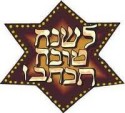 | |||
"May you be inscribed and sealed for a good year!"
You might also add: "Immediately, for a good life and for peace."
|
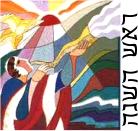

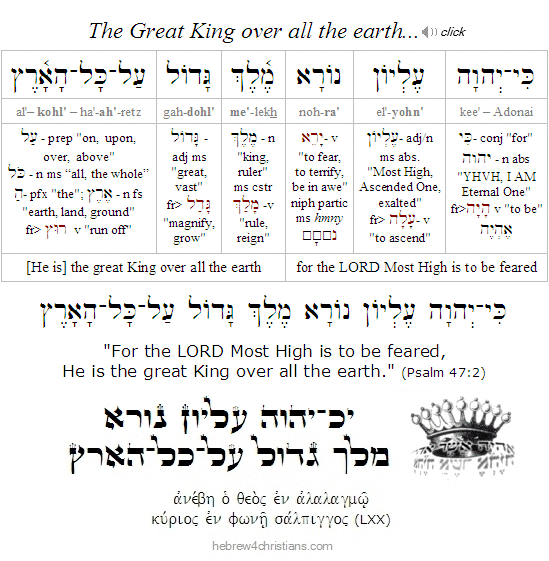
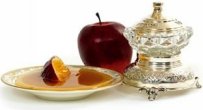
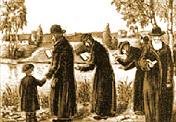


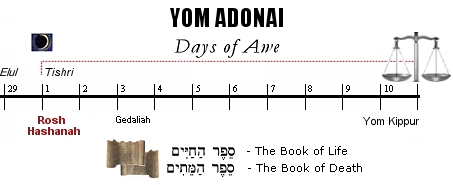
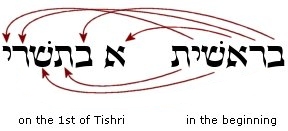
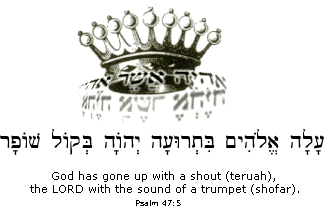
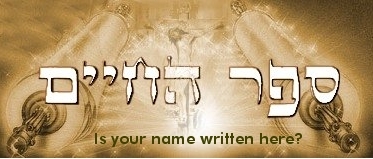
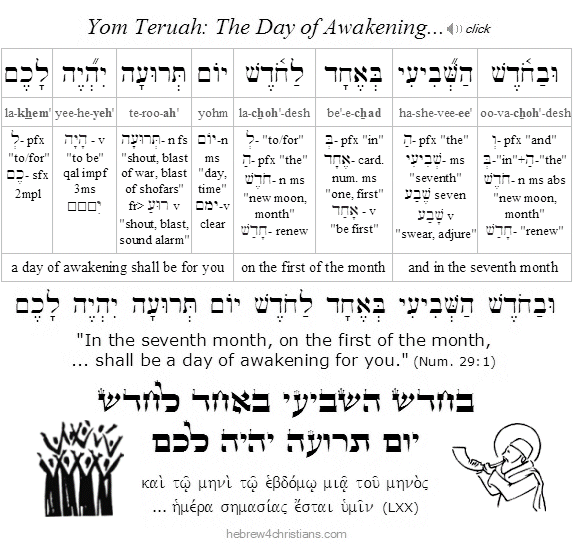
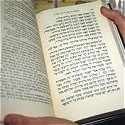

No comments:
Post a Comment